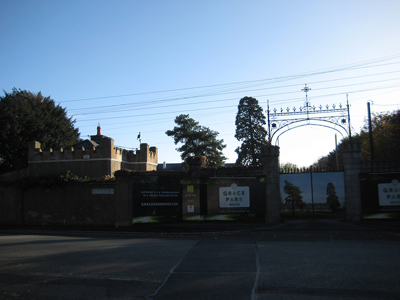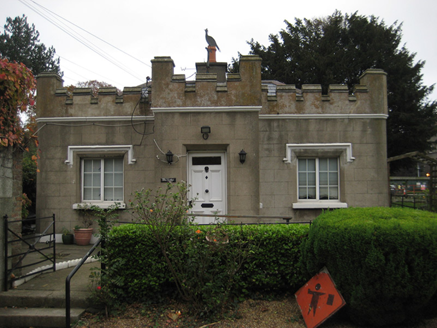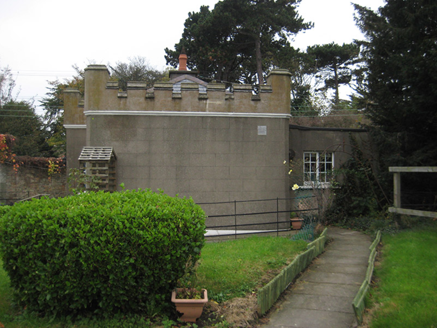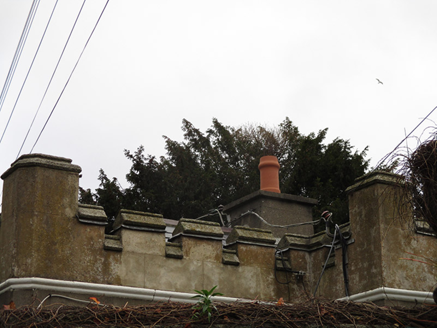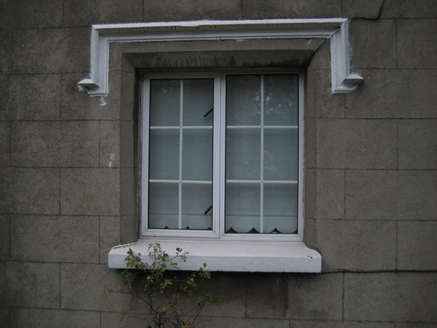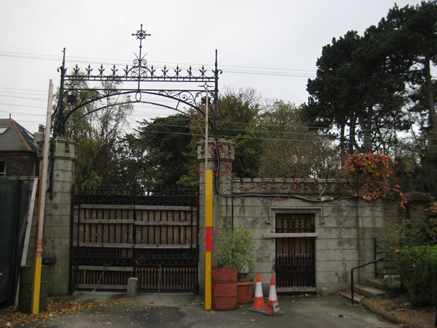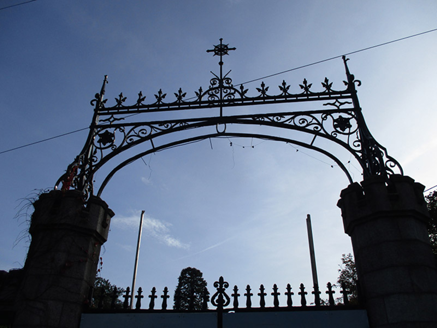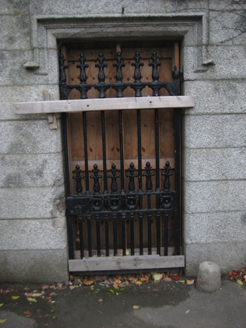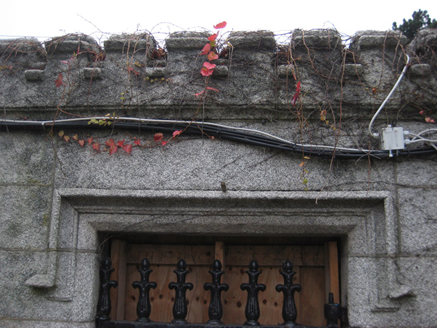Survey Data
Reg No
50120021
Rating
Regional
Categories of Special Interest
Architectural, Artistic, Social, Technical
Original Use
Gate lodge
Date
1830 - 1850
Coordinates
316635, 236849
Date Recorded
28/10/2017
Date Updated
--/--/--
Description
Former entrance, now disused, to St. Joseph's School (formerly Drumcondra Castle), erected c. 1840 and comprising detached three-bay single-storey gate lodge with central projecting porch, and having return and enclosed yard to rear (north). Hipped natural slate roof with clay ridge tiles, partly hidden behind rendered castellated parapet with carved granite capping, central rendered chimneystack with terracotta pot, and some cast-iron rainwater goods. Ruled-and-lined rendered walling with moulded render stringcourse below parapet. Square-headed window openings with cut granite sills, chamfered reveals and render hood-mouldings, and replacement windows. Square-headed doorway with chamfered reveals and timber panelled door with glazed panel. Double-leaf cast-iron vehicular gate with foliate details and fleur-de-lis finials, flanked by octagonal-plan cut granite piers with castellated parapets and ornate wrought-iron pediment. Cut granite screen walls with castellated parapets and square-headed doorways, and single-leaf cast-iron gates with carved hood-mouldings. Pebbledashed rendered boundary wall to Grace Park Road.
Appraisal
This small former gate lodge to Drumcondra Castle, later St. Joseph's School, offers an intriguing introduction to the varied and expansive complex beyond. The lodge retains its early form and character, especially evident in the castellated parapet, and is greatly complemented by the large and imposing entrance ensemble, in which the crenellated detail is echoed. The highly decorative cast-iron gates and wrought-iron pediment, which formerly displayed the name 'St. Joseph's School', attest to the skill and artisanship in metalwork in the late nineteenth century, lending technical as well as visual interest to the composition. As was often the case with these structures, the architectural character of the lodge echoed that employed in the castle which it served. Both buildings remained in residential use until 1882 when the Carmelite Brothers founded St. Joseph's 'Male Blind Asylum'.

